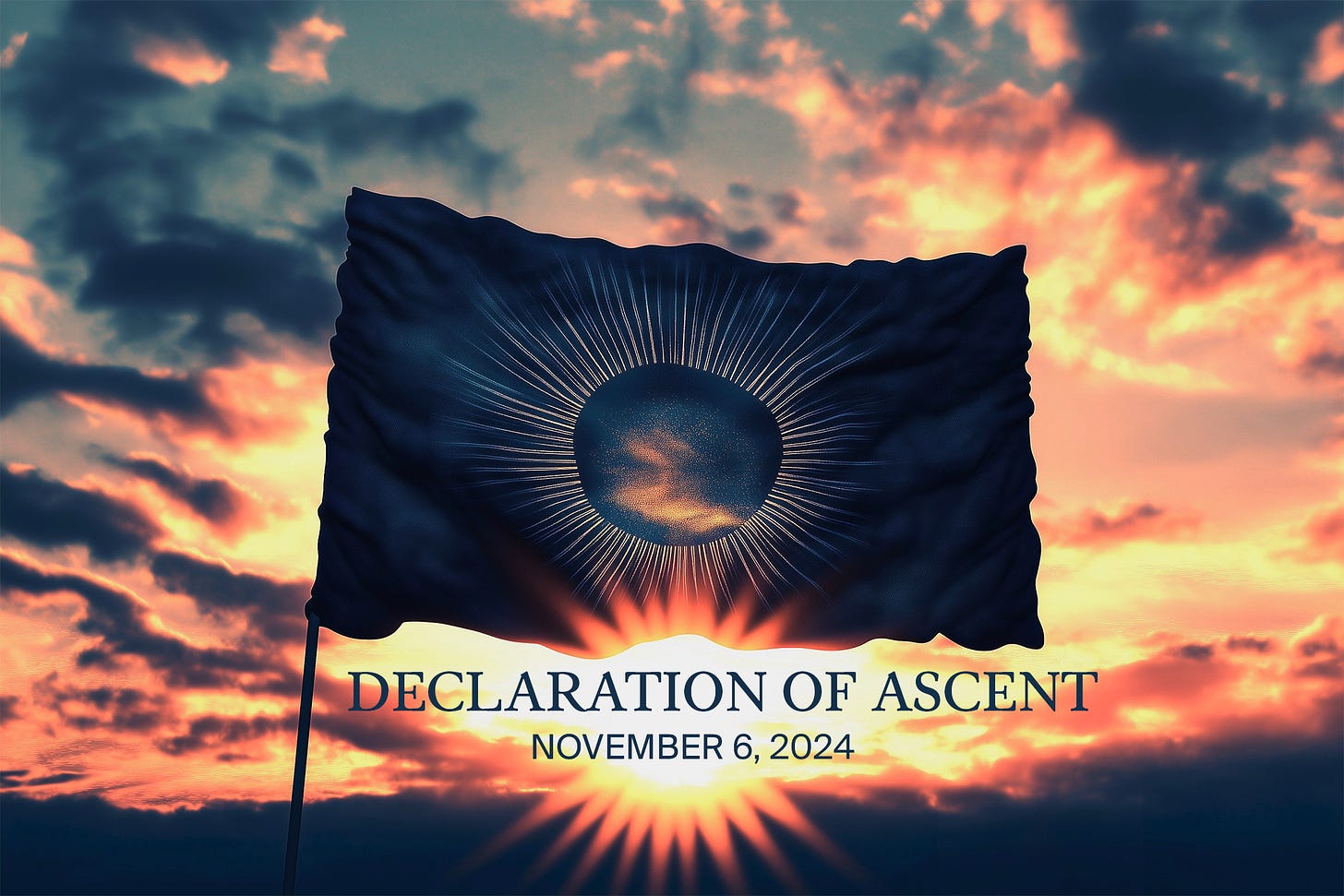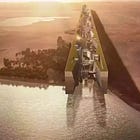This is part 4 of 5 in Urban Proxima’s series on the theory and practice of building new cities.
Part 1: That time Google tried to build a neighborhood
Part 2: Outsourcing Sovereignty
Part 3: Urbanism-as-a-Service
Part 4: Urban Larping
Bonus: Dreaming of Atlantis
Welcome to the final penultimate installment of our series on building new cities. To date, we’ve covered a range of projects, each representing different approaches to the challenge of building new places; each deserving of our consideration, understanding, and appreciation.
Today, however, we’ll be discussing abject nonsense.
The Fyre Festival of city building
Praxis is a city that, as of this writing, does not exist. Truth be told, it's really more of a state of mind than a place and if that sounds hand-wavy…well…
The folks behind Praxis claim they want to found a city somewhere in the Mediterranean. As to why there, or even why at all, their stated goals are ill-defined. From their website:
Praxis is a home for the brave, who strive for virtue and wisdom. Our purpose is to restore Western Civilization and pursue our ultimate destiny of life among the stars.
They go on to talk about “Acceleration Zones”, which they define as:
A new type of Special Economic Zone that accelerates technological progress in service of national priorities by attracting technologists and developing an institutional and regulatory structure that unlocks technological development.
As to what’s new or different about their take on special economic zones, the answer to that is less than fully articulated. In their values section, they state:
Inspired by the wisdom of great civilizations, we believe that true sovereignty is achieved through alignment with the transcendent. The Praxian way of life is driven by a vital energy that seeks transcendence through heroic action and contemplation. Our mission is to channel this drive into a cohesive way of life, forged by social structures and institutions that guide our people toward their destiny.
So, possibly Romer-esque or maybe getting into industrial policy? Hard to tell, though; the information-to-word ratio here is abysmal.
The most serious reading I can give is “a desire to create a city as a vehicle for building a certain kind of culture”. Based on reading way too many tweets, my best guess is that they’re shooting for some sort of revanchist Western chauvinism vibe (with medieval knights, and Napoleon, and also Roman legionaries, cause how else would you do it?).

To the extent that the serious reading is correct, they’ve got the project of city-building ass-backwards.
Referring to the Holy Scriptures (i.e. anything that Alain Bertaud has ever written), cities are first and foremost labor markets. Economic growth is what causes a city to physically develop. Community and culture then emerge over time as people gather and social life begins to take shape. If projects like The Line are bad because they imagine you can throw up some buildings and get an economy, then the mistake Praxis makes is thinking one could do the same and instantiate a particular way of life.
Taking this all less seriously for a moment, I’m not convinced it isn’t a grift. Everything here is terribly vague and non-specificity is the redoubt of conmen and bad product managers. That said, the founders behind Praxis have apparently raised over $500 million dollars…but…that’s mostly coming from crypto funds, so I’m down-weighting any legitimacy I might have granted them based on their ability to raise capital.
In which I decide not to discuss the Network State
One major difficulty in writing this piece has been in deciding how to differentiate the things I think need to be differentiated.
Praxis claims membership in something called The Network State Movement, but thoroughly explaining The Network State is a cross to bear another day. What’s relevant here, though, is that The Network State is synonymous with an individual named Balaji Srinivasan. California Forever (which we talked about in part III) was partially funded by another individual named Marc Andreessen. Mr. Srinivasan used to be a partner at Mr. Andreessen’s venture capital firm, A16Z.
Why does this matter?
Well, when journalists do follow-the-money style reporting, it’s easy for them to lump everything together on the basis of financial and social connections. It also doesn’t help when certain aforementioned individuals claim anyone building anything anywhere as part of their movement at the same time as they’re going on about needing a gray pride parade.1
So, why bother ribbing Praxis? Well, I wrote this post for the same reason I wrote the entire series — to showcase contemporary approaches to city-building and explain that there’s more than one type of thing going on.
In part II, we saw Próspera envisioning a city as a special economic zone. In part III we learned about California Forever and Ciudad Morazán’s platform oriented approach. And here in part IV we talked about a project that’s probably just jazz hands and weird tweets.
Understanding the differences are important because it allows us to evaluate and learn from each of these based on their own merits. And the things we can learn from others undertaking something as audacious as building a city are almost certainly lessons we can apply elsewhere as well.
Originally, this was to be the end of our series on New Cities. However, something that fell to the cutting room floor was resurrected by the grace of one of my reviewers. So, if you’d like to hear about the perils and promise of building floating cities, tune in next time for a mini-post on just that.
In the meantime, let me know what y’all thought down below. Think I’m too hard on Praxis, tell me why!2 Have thoughts, opinions, feelings, or second-hand vibes about The Network State and want me to write the definitive explainer? Let me know that, too. God help me, I am willing to huff that rhetorical miasma long enough to give y’all a thousand words of clarity (but only if someone asks nicely).
Alright, that’s a wrap. As always, tips go toward caffeine and web hosting. Hope to see everyone back around next week as we conclude our series on city building — this time, on the water.
It’s actually weirder than it sounds, but that’s a topic that would require it’s own explainer.
I’m not, but we’re all allowed to be wrong sometimes.



Thank you for this interesting piece. A few disorganized questions I have to stimulate the conversation: There seems to be a difference between top down models and bottom up models, right? Morazán is sort of a top down model with a benevolent dictator property owner who designs the framework and makes the key governance decisions and then people opt into this. Maybe California Forever is the same? Then the network state is more bottom up, with people forming a group in the cloud based on shared values and goals and then descending on and co-creating a physical manifestation of this community. Both would seem to have some underlying economic rationale in the sense that both rely on individuals making their own decisions to join, but then they have different governance structures. Also, to what extent is the network state just like the back to the land communes of the 1960s and 70s? I suppose those were focused on a few issues whereas network states can be organized around many more issues. But it seems like that earlier movement might hold some lessons. And finally, to what extent does digital nomadism scramble the earlier economic rationales of city building. You don’t always have to have an underlying economic engine or rationale if you can import wages thru digital nomadism. And if so, does this free up the city to focus on more ephemeral concepts?